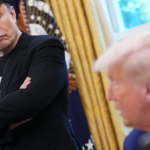A CEO today has to run a great business, manage a great stock, and, ultimately, shape a lasting organizational legacy, Boatwright said. As COO, he and Niccol were a strong pairing, he said. Boatwright focused on operations, while Niccol excelled at communicating the company’s growth story to investors. One of the hardest adjustments as CEO, Boatwright admitted, was shifting from pulling the levers himself to managing outcomes through others—and doing so while building investor confidence and long-term vision. “It’s just a completely different job,” he said.
Other newly minted CEOs echoed that learning curve. Howard Hochhauser, the CEO of Ancestry.com and its former COO and CFO, stepped into the role earlier this year at the private equity-backed company. Although he’d previously served as interim chief executive, the weight of the job still caught him off guard once permanently in the role. “Everybody wants a successful exit,” he said. “To do that, you have to grow the company. And now I’m spending 110% of my time on growth.”
Howard Hochhauser, CEO of the PE-backed genealogy testing company Ancestry.com, shared a similar sentiment at the Fortune COO Summit. Hochhauser stepped into the top job in February after serving in a dual CFO-COO role and a brief stint as interim CEO from October 2017 to May 2018. Still, he admitted that he was surprised by how all-encompassing the corner office could be.
A CEO at a Blackstone portfolio company is tasked with both running the business and planning for a future exit. “Everybody wants a successful exit,” Hochhauser told me. “To do that, you have to grow the company. And so now it’s spending 110% of my time on growth.”
At Xerox, Steve Bandrowczak stepped into the CEO role in 2023 following the sudden passing of John Visentin. He had spent five years as COO, was a seasoned CIO, and had attended numerous board and committee meetings. But once he became CEO, the stakes shifted.
Bandrowczak encouraged aspiring CEOs to take governance and leadership courses to prepare for the transition to the corner office. And as a teacher of rising executives himself, he offered one consistent piece of advice: “Get comfortable being uncomfortable.”
Today’s newsletter was curated by Lily Mae Lazarus.









